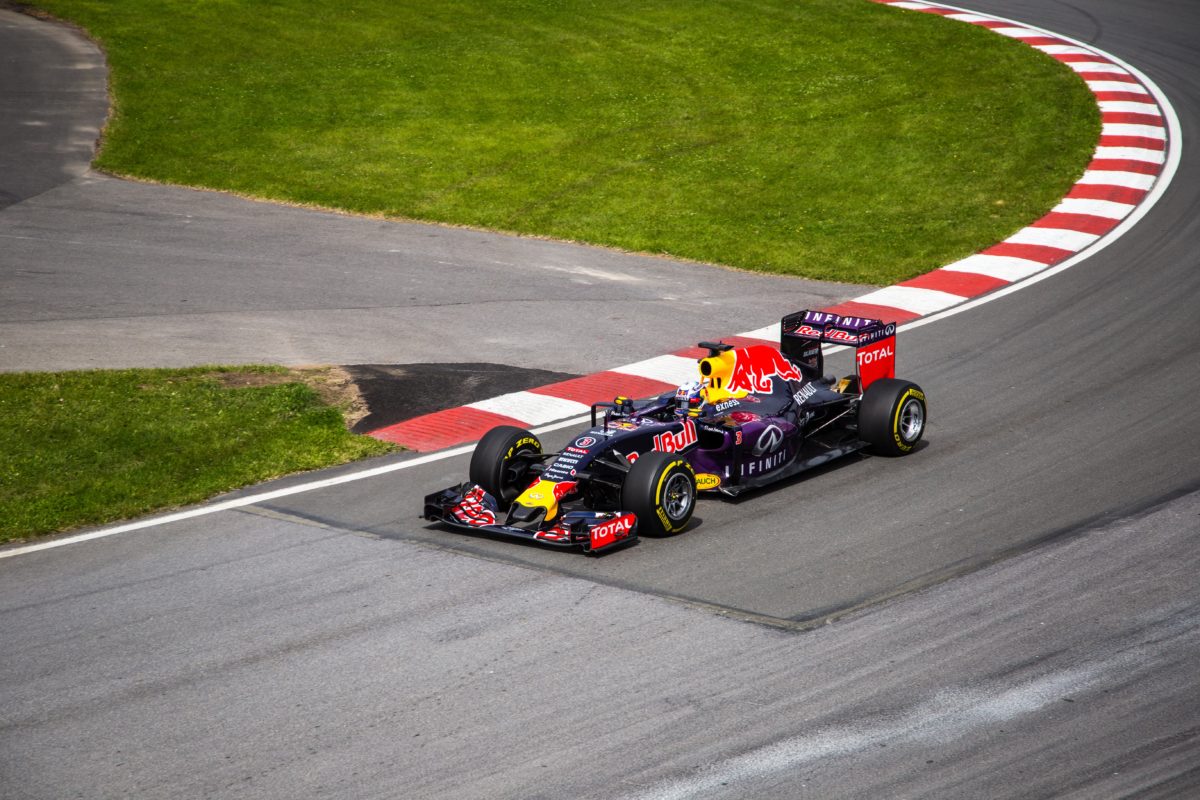Formula 1 has for decades been criticized by media about the amount of pollution the racecars release and how little effort is made to make a better impact on the environment. (Hanley, 2019)
However, during the past decades, the sport has been the leading innovator in terms of fuel efficiency and energy recovering systems. Indeed, because of regulations on how much fuel can be used per race, the racing teams have had to come up with innovative and brand-new ways to use the energy as efficiently as possible. This led Research and development to be where the majority of the teams’ budget is spent and is the reason why the cars are now so efficient.
Information management has been one of the greatest innovation factors for modern formula 1 cars. The latter have sensors all around them and allow to transmit within milliseconds the information received not only to the driver, but also to the pit board or even data centers at the other side of the globe. The compiling of all this data into comprehensive and useful information allows team to understand exactly where they are losing time, which parts of the cars need improvement, etc.
While someone might think that this efficiency only benefits teams in going faster than their rivals, it also directly flows down to your everyday road car or any motor. Indeed, some of the previously mentioned sensors are now widespread in road cars, delivering real time data to the driver, very often improving efficiency, for example with the tire pressure indicators (Rossi, 2016).
Moreover, in terms of fuel efficiency, Mercedes (a Formula 1 team and car manufacturer) has recently reached the milestone record of 50% thermal efficiency. This means that more than half of the fuel that has been injected has been used to move the car. Transferring this knowledge into the road car, their Mercedes Project One is offering a 40% fuel efficiency which is a record for road cars (Noble, 2017).
In addition, energy recovery systems now present in all hybrid cars are being improved every year in Formula 1 through the Kinetic Energy Recovery Systems (KERS). The latter makes use of the kinetic energy that decreases during braking in order to transform it into electricity that will later be used to give power to the car. Car manufacturers like Volvo are now starting to use the KERS in their new cars, indicating again a future decrease in fuel consumption (Sarkar, 2016).
All in all, while indeed, formula 1 cars “waste” hundreds of liters of fuel each race, the technology behind them allow the whole planet to save more than thousands of liters every day in the streets, therefore contributing to a positive impact for the planet.
References
Hanley, S. (2019). The Gigantic Carbon Footprint Of Formula One. Clean Technica. Accessed at https://cleantechnica.com/2019/04/30/the-gigantic-carbon-footprint-of-formula-one/
Noble, J. (2017). Mercedes F1 engine hits ‘remarkable’ efficiency target on dyno. Autosport. Accessed at https://www.autosport.com/f1/news/131772/mercedes-engine-hits-remarkable-dyno-target
Rossi, B. (2016). What we can learn from the F1 approach to data. Information Age. Accessed at https://www.information-age.com/winning-formula-what-we-can-learn-f1-approach-data-123461451/
Sarkar, A. (2016). Kinetic Energy Recovery Systems in Formula 1. Stanford University. Accessed at: http://large.stanford.edu/courses/2015/ph240/sarkar1/


I think the biggest carbon footprint in F1 is all the logistics. Moving everything and everyone from circuit to circuit causes a huge carbon footprint. However, I think the FIA and the individual teams are already trying to offset this carbon footprint with green projects, basically making them carbon neutral.
I agree with Sander, it is a bit shortsighted to only mention the fuel of the racing cars, while all teams travel the globe by airplane. Each team ships up to a hundred ton of cars, spare parts and equipment to each of the 21 races, which adds up to 5.5 million gallons of jet fuel for all teams combined (Hanley, 2019). Since one gallon of jet fuel is estimated to emit approximately 21 pounds of CO2 (EIA, 2016), merely traveling to races already causes 115 million pounds of CO2 emission.
Hanley, 2019: https://cleantechnica.com/2019/04/30/the-gigantic-carbon-footprint-of-formula-one/
EIA, 2016: https://www.eia.gov/environment/emissions/co2_vol_mass.php
Hi Guillaume, interesting read! As I recently began watching F1, this is quite interesting to further understand the policies and tasks that occur behind the scenes.
It is interesting that some innovations in the F1 cars have been passed onto normal cars. But it also makes me wonder if innovations in environmentally-friendly cars will ever be implemented into F1? With people more and more aware of climate change, it would not surprise me if F1 (or F2, etc.) competitors ever decided to cater the overall concerns by implementing any changes. Obviously this would depend on the change, but it would be interesting to see if an electric car could ever succeed, let alone even participate in F1. I think a big attraction of formula 1 is the iconic cars’ looks and their drivers sheer passion for driving more old school style (although nowadays it is obviously modernized), but it would be interesting to see if electric cars could be developed that provide a similar experience to the drivers and viewers, but without the emissions. Although this likely won’t happen as it may take away the feeling of F1.
Anyways, it also makes sense that F1 is a leading innovator! The teams function like normal competitors in their industry, and so the stricter regulations should drive the most innovating teams to find creative and effective solutions. This is good to hear.
Pedro